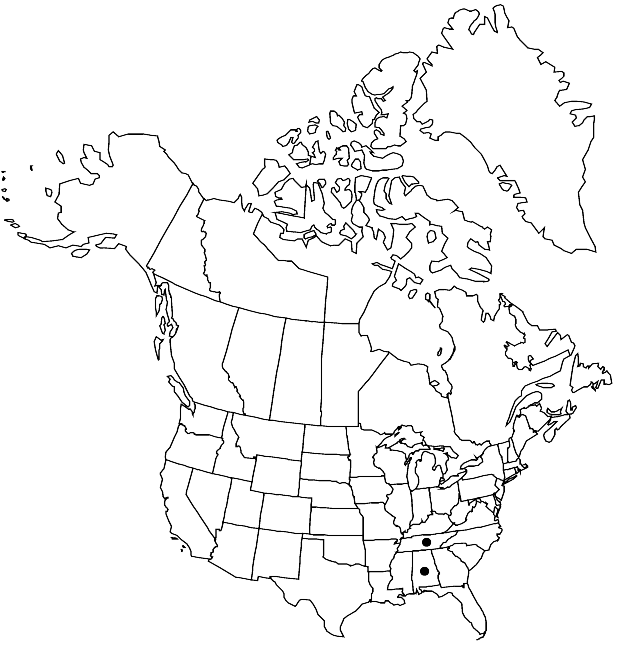Paysonia densipila
Novon 12: 380. 2002.
Annuals; pubescent or glabrous, trichomes simple, with branched, smaller ones. Stems erect, or outer ones decumbent at base, (purplish proximally), 1–4 dm. Basal leaves: blade 4–8 cm × 10–18 mm, margins lyrately pinnatifid to pinnately lobed, (apex obtuse, lateral lobes decurrent on rachis, terminal lobes relatively large), surfaces hirsute (abaxial with simple and branched trichomes, adaxial with mostly simple ones). Cauline leaves: blade broadly ovate to oblong, 1–3 cm × 5–15 mm (smaller distally), base auriculate, margins dentate to nearly lobed, (proximal with apex broadly obtuse, distal more acute, surfaces hirsute, trichomes mostly simple, spreading). Fruiting pedicels divaricate-ascending, straight, (expanded apically), 10–20 mm, pubescent. Flowers: sepals (yellowish), 2.5–4 × 1.5–2 mm, sparsely to densely pubescent (trichomes appressed, branched, often with some spreading, single ones); petals yellow, 6–8 × 4–5 mm, (not markedly differentiated into blade and claw), apex rounded; filaments strongly dilated basally, (anthers oblong, 1.5 mm, glandular tissue thin, continuous beneath stamens, forming projections between single and paired stamens and abbreviated ring around bases of single stamens). Fruits subsessile, subglobose, (slightly broader than long), 3–4 mm diam., (uncompressed); valves densely pubescent, trichomes spreading, simple or branched; replum ± orbicular; septum complete; ovules 4–8 per ovary; style 2–3 mm, glabrous or pubescent proximally; stigma slightly expanded. Seeds orbicular or suborbicular (or slightly longer than broad), 2–2.5 mm. 2n = 16.
Phenology: Flowering Mar–May.
Habitat: Cedar glades with thin soil over limestone, open alluvial sites, stream bottoms, fallow fields
Discussion
Selected References
None.
